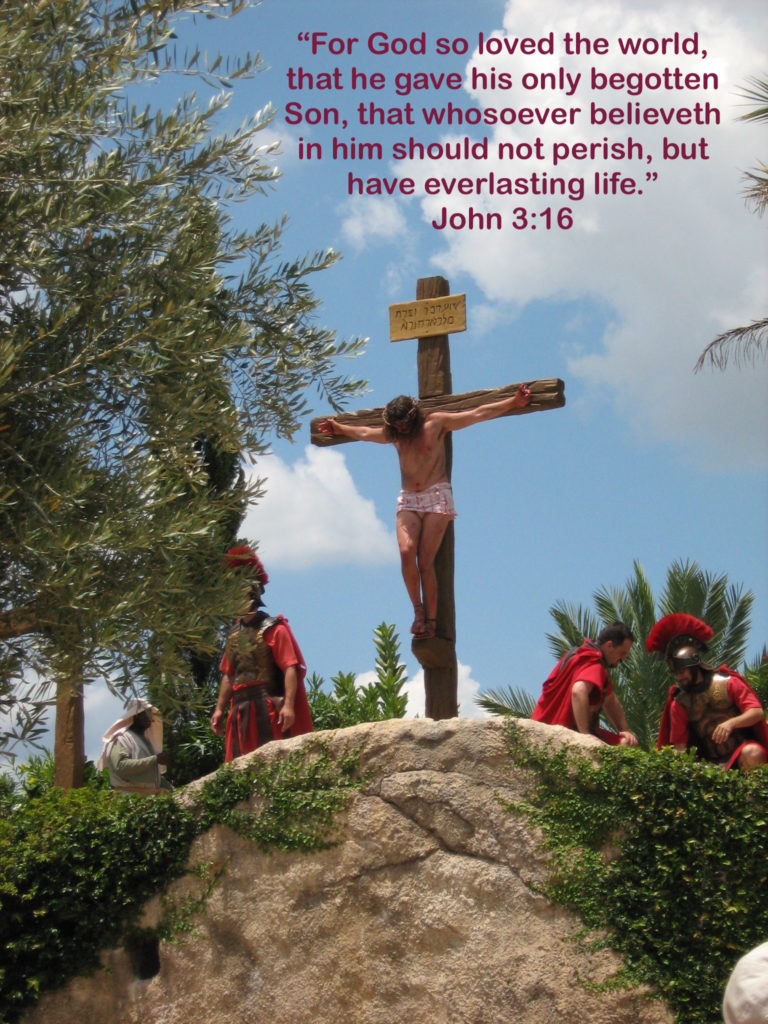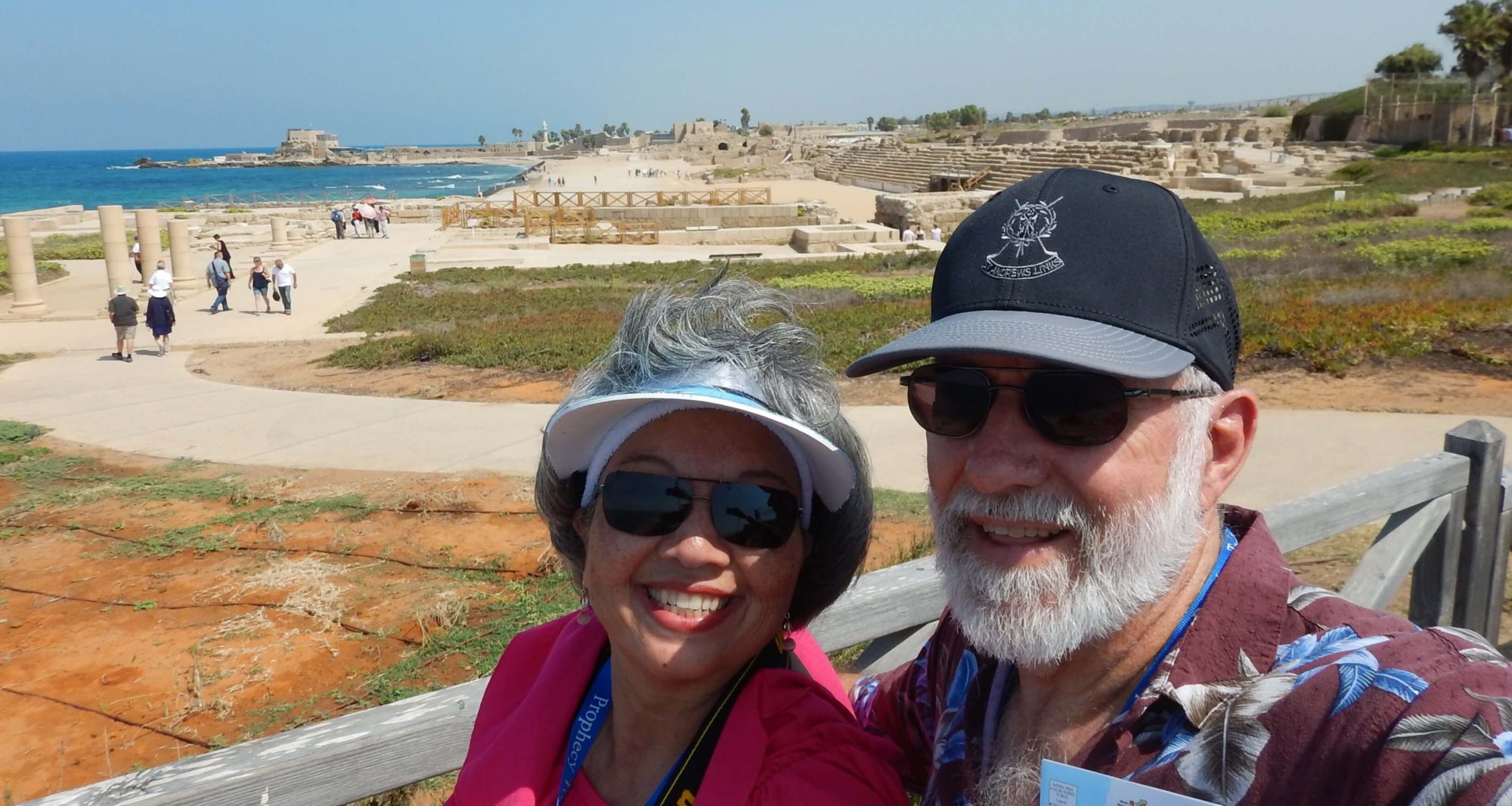
“But God commendeth his love toward us, in that, while we were yet sinners, Christ died for us.”- Romans 5:8
(Please note: Parts of this blog is graphic in its descriptions of the events leading up to and including the crucifixion of Christ.)
The week before Easter is often referred to as “Passion” week. This is the week that began with Jesus’ entrance into Jerusalem on the back of a donkey while onlookers cried “Hosanna to the Son of David: Blessed is he that cometh in the name of the Lord; Hosanna in the highest.” (Matthew 21:9) Less than one week later, Jesus would hear the words “Crucify Him!” shouted by the same people who had earlier praised Him as their king.
We often think of the word “passion” as a strong feeling, but the word actually comes from the Latin word “pati”, which means “to suffer.” Many people are aware of some of the events that happened to Jesus in the week prior to His crucifixion, but a true understanding of His suffering is difficult to grasp.
Physically, Jesus endured a brutal beating by Roman soldiers at Pilate’s command. Typically, this is done with a short whip called a flagrum. It is composed of three knotted leather strips with pieces of metal or bone intertwined. Sometimes, metal hooks were attached to the ends of the strips to dig into the flesh when dragged across the back. Initially, the whipping would remove layers of the skin exposing the muscle tissues below. As the beating continued, excessive blood loss would ensue and often the victims would die from this form of punishment. If the criminal was sentenced to crucifixion, the centurion in charge was responsible to halt the beating before death occurred. Isaiah 53:5 prophesied, “But he was wounded for our transgressions, he was bruised for our iniquities: the chastisement of our peace was upon him; and with his stripes we are healed.”
Roman soldiers also placed a crown of thorns on the head of Jesus. These long sharp thorns penetrated deeply into Jesus’ scalp, causing more bleeding and potential nerve damage, which induced great facial and neck pain. Matthew 27:29 states, “And when they had platted a crown of thorns, they put it upon his head, and a reed in his right hand: and they bowed the knee before him, and mocked him, saying, Hail, King of the Jews!”
Jesus was also forced to carry the crossbeam of His cross to the actual site of the crucifixion. This huge piece of timber was roughly placed on the shoulders of Jesus, and with each step, He struggled to walk the road to Calvary as the wood ripped through even more of His already shredded back. The 75-125 lb weight of the beam was staggering for Him to carry as He was extremely weakened by the massive loss of blood and intense pain. In fact, the Bible records that the Roman soldiers compelled another man to help carry the beam for Jesus. (Luke 23:26).
Lastly, crucifixion was the Roman form of capital punishment, although it was not invented by them. Those sentenced to die by this method were secured to the cross with nails that were approximately 7-9 inches in length. The wrists are the most likely place that the nails were driven to hold the upper body to the cross itself, while the feet were also secured with these blunt-tipped iron nails. Suspension on the cross would dislocate the shoulders, once again causing intense pain in the arms. In order to draw a breath, Jesus would need to push Himself upward to allow His lungs to inflate, and with each effort made to breathe, wounds on His back would reopen as they scraped along the wood of the cross. Death comes as a result of suffocation when the victim could no longer push himself up to breathe.
In addition to the physical suffering of Jesus, He suffered emotionally. He endured the betrayal of His followers, the mocking from the crowd, the humiliation of the cross, and the separation from His Father for the first time in all eternity. The Bible records Jesus crying out to His heavenly Father in agony. “And at the ninth hour Jesus cried with a loud voice, saying, Eloi, Eloi, lama sabachthani? which is, being interpreted, My God, my God, why hast thou forsaken me?” (Mark 15:34)
Why did Jesus go through all of this? He did it because of His “passion” for us. In this usage, “passion” refers to a strong emotional desire, nearly uncontrollable. God has an intense “passion” for His creation. Each person on this planet who has ever lived, or ever will live, is one whom God loves passionately. Genesis records that God chose to create man differently than the rest of His creation, and that He personally, “… breathed into his nostrils the breath of life; and man became a living soul.” We were not created with the animals; we were a special creation. God wanted an intimate relationship with us, but once sin entered the world, it was impossible for God to abide with mankind due to His holiness.
In order to restore this relationship, God sacrificed His only Son, Jesus Christ, on that old rugged cross to become the atonement for the sins of all humanity. When Jesus rose on that 3rd day after His death, He proved He was the Son of God, the Saviour of the world. Through His death and resurrection, God provided a way for us to be reconciled to Him. When we realize that we are sinners in need of a Saviour, we can accept Jesus for who He is and ask Him to forgive us. It is then that our relationship with God is restored, and we are promised an eternity with Him in heaven. The Bible tells us, “For God so loved the world, that he gave his only begotten Son, that whosoever believeth in him should not perish, but have everlasting life.” (John 3:16)
That’s the reason for the “Passion” week.
Tell of the cross where they nailed Him, writhing in anguish and pain;
Tell of the grave where they laid Him, tell how He liveth again.
Love in that story so tender, clearer than ever I see;
Stay, let me weep while you whisper, “Love paid the ransom for me.”
Tell me the story of Jesus, write on my heart every word;
Tell me the story most precious, sweetest that ever was heard.
(from “Tell Me the Story of Jesus” by Fanny Crosby)
“I am the good shepherd: the good shepherd giveth his life for the sheep.” – John 10:11
**********
As you celebrate the resurrection of Jesus, never forget the “passion” of our Saviour.

Passion. Not a noun we use much in our society. My only real hearing of this word occurred at Portola Middle School where I was covering a week of music classes for a friend who was on a field trip with our students to Yosemite. The classes were beginning to advanced levels in strings, band, and orchestra. In each class, I discussed dynamics, making sure the level of the music stand was correct and the importance of appropriate articulation. And, most importantly of all for me, I conducted – something I truly enjoy every moment while doing it. I really “throw myself” into it.
The last day of class, the first-chair violinist in the advanced strings class approached me as students were putting their instruments away in expectation of the bell.
“Mr. Hollis,” Lucky said shyly, “Thank you so much for teaching us this week. Your passion makes the music come alive for us.”
I was so overwhelmed with her use of the word “passion” that I didn’t know how to respond and to this day, I tear up when I think of it.
“Thank you for telling me that, Lucky. Hearing that from you [“the first-chair violinist” was implied] makes me very happy.”
In the meantime, I’ve heard from other teachers that Lucky was a very special person and always blessed those around her. She moved on to high school where her teachers repeated the compliments about her.
Two months ago, I was informed that Lucky and her brother, who was also my student, were killed in an automobile accident. They died instantly. There was no pain.
I still grieve that the world has lost such a beautiful, giving soul and I will cherish the gift she gave me forever.
I hold you in my heart, Lucky, and you will remain there always.”
A young life that left a powerful legacy… a passion for love, like our Saviour!